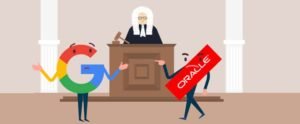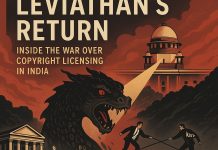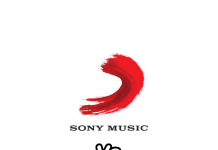For those interested, here is a transcript of the full oral arguments that transpired at the US Supreme Court on 7/10/2020 and here is an audio of the same. If you wish to briefly understand my perspective on US software copyrights, check out Part 1.
BRIEF BACKGROUND TO THE DISPUTE
This dispute revolves around Oracle’s alleged propriety rights (under the US Copyright Act) in the Java Programming Language (37 Java Packages) and the expression of one of its rangeCheck routines which basically allows the Google’s API to use the Java Language and make its product accessible to users. The Android OS of Google uses the Java API, i.e the processing language interface which Google had been using as a language on its products, while programming implementations and functions. This particular move, in 2008, was supported, explicitly, by SUN (developer of the free to be used Java programming language), when Google had released the Android OS. All of Google’s interface herein revolved around the language Java and a lot of its implementation functionalities were built around understanding declaring codes in merely this language. Turn to 2010, when Oracle acquired SUN, it started a long running litigation against Google upon the unlicensed use of the Java Language and the declaring codes on its Android OS, claiming an infringement of its software copyrights, with respect to certain coded expressions initially developed by SUN (now a subsidiary of Oracle). These expressions, had by now become an inherent part of the app development feature in the Android OS, due to its sole compatibility, with respect to mobile apps with Java. For developers to make their implementing functionality compatible with Android OS, it was essential for the particular expression of the code, initially developed by SUN, to be used as a declaring code. It is to this effect, that Oracle claims copyright infringement, unlicensed usage, and Google claims the merger doctrine of copyright law, the code being a method of operation as well as a defense of fair use. For a better understanding of the facts and the background of this case at the various levels of the American Judiciary before the US Supreme Court – click here.
In this post I shall just be extracting and pointing out certain interesting parts of what transpired in the oral arguments before the US Supreme Court, highlighting the weird analogies, arguments and questions that were raised, completely ignoring the peculiar nature of software being intrinsically functional, as against aesthetic stuff.
EXTRACTS AND ANALYSIS
- Chief Justice Roberts on Thomas Goldstein’s argument against monopolization: “……but the only reason that there’s only one way to do it is because Sun and Oracle’s product expression was very successful. There were a lot of ways to do it when they did it. And the fact that everybody i.e. programmers really liked it and that’s what everybody used, it seems a bit much to penalize them for that.”
Everybody “used” – the court here clearly ignored the point of a code being a method of operation and not an aesthetic expression made to be seen or viewed. The other programmers really liked it, because the code/ or the expression was “useful” in the sense it was productive and rendered results in favor of innovation. Does this come within the domain of copyright or patents?
- Chief Justice Roberts once again: “…. I don’t think it’s a patent right. I mean, it’s their particular expression. And you want to –you say the only way for you to say what you want to say in the new material that you provide is to copy – theirs. That’s not a patent. That’s copyright”
Clearly there is confusion towards the end of the purpose of software copyrights. The copying done herein was not of the expressive nature of the code, but rather was an incidental result of copying its functional implications. If to perform a particular function, an expression needs to be copied, an expression which is solely capable of rendering that function possible, there is no way the said expression can be copyrighted, due to the monopoly ultimately resulting in the functionality being monopolized, which does not come within the domain of copyright laws – Basic Merger and scenes a faire doctrine – an expression which is a method to perform an operation cannot be copyrighted, as by virtue of that copyright, that innovation function is restricted from being performed, which goes against the fundamental tenet of IP i.e. to consequentially promote innovation and the progress of sciences and arts. In arguendo, even if the particular expression might not be the only way to achieve that functionality, it being one of the efficient ways, renders it non-copyrightable, due to it ultimately constituting a “method of operation”.
- Chief Justice Roberts: “…But, you know, cracking the safe may be the only way to get the money that you want, but that doesn’t mean you can do it. I mean, if it’s the only way, the way for you to get it is to get a license.”
Cracking the safe here is for a particular purpose i.e to ensure further compatibility and innovation. This analogy again ignores the tenet of a “useful article” not being capable of being copyrighted as is clearly encoded within the copyright statute and Article 9(2) of the TRIPS Agreement.
- Justice Breyer: “….just one way to do it. Why is there just one way to do it? If you spent enough time and you had the most brilliant computer programmers, don’t you think they could devise a system of calling up the Java program, though it might be expensive to do and take a long time, that didn’t use the word “java.lang.math?
Thomas Goldstein (Counsel for Google): Well, two things: First, why would we have a copyright system that does that, where the only upshot of Oracle’s rule that it wants you to adopt is to make computer programming credibly inefficient so that we have fewer creative computer programs”
Well played Thomas. Exactly the point. Why would a copyright system want a different expression which renders the same functionality, just to allow for exclusivities? It’s like having two codes doing the exact same thing – resulting in basic duplication – why would a system meant to promote science and innovation do that? The basic purpose of copyright is to allow for multiple diverse perspectives and not this. Also, the basic tenet of a software is that it renders a particular function possible, which seemed to have completely skipped the minds of the judges here. If you want to monopolize the possibility of performing a function, get a patent – not a copyright.
- Justice Gorsuch: “….You are saying- I wish to share the facilities of a more successful rival because they’ve come up with a particularly elegant or efficient or successful or highly adopted solution in the marketplace, and ride on their innovation”
Firstly – is innovation protected by copyright? Secondly are solutions or efficiency-based determinants copyrightable goods? Finally, IP does not protect against positive externalities. As long as the originator is able to profit out of their creations, someone using those innovations to earn out of them, without disturbing the market of the originator – does not get hit by IP laws. IP only protects against negative externalities, and not positive ones, but that’s a theoretical interpretation which the court would obviously not get into – for a detailed understanding of the free riding argument read this.
- Justice Kavanaugh: “….On your merger argument, one concern that has been raised already is the timing issue. Another concern that I want you to respond to is that it seems to define the relevant idea in terms of what you copy. You’re not allowed to copy a song just because it’s the only way to express that song. Why is that principle not at play here?”
The fact that the utility of an aesthetic product – song is being compared with the utility in a functional product i.e. a software, even as an analogy makes me wonder about the state of understanding of copyright principles. The principle does not play here because the song is an experience-oriented article, where the value is of that experience. The value in a computer programme is not with respect to the aesthetic and literary features of the code, but rather its incidental functionality – therefore if that is the only way of expressing a code, which renders a particular functionality, you are not only monopolizing the aesthetic structure, sequence and organization, and the content of the code, but also the capability of rendering that function possible. Re- just because softwares are literary modes of performing certain tasks, does not mean the capability to perform those tasks can be monopolized by virtue of monopolizing the literary elements. If the function and the incidental aesthetic arrangement cannot be separated, then no – the principle of conceptual separability renders the work – non-copyrightable
- Rosencranz (Counsel for Oracle): “….No one else thought that innovating required copying Sun’s code without a license. As Justice Alito notes, Apple and Microsoft did not copy to create their competing platforms. Neither did others who wrote competing platforms in the Java language. If this Court holds that a jury may conclude that copying declaring code is fair, it will encourage copying, create legal uncertainty, and decimate the business model which a lot of companies depend on, undermining the very incentives copyright was designed to promote.”
No one else used it, does not mean Google can’t use it. Just because no one required that exact functionality or capability to perform that function for their product, does not mean Google should not use the same function. By virtue of a right on the code, can the capability to render a result in terms of efficiency be monopolized? Further, Google was indeed using this since before Java was acquired by Oracle, so once set up to a language and all its commands for its products being responsive to that language, it would require Google to unlearn and learn something completely new, rendering the point of IP as a tool for innovation completely fruitless.
Encourage copying? Encourage copying for use and interoperability and functional performance. Curbing the same is not the intention of copying, but rather curbing the mimicking of end result expressions are. The program herein was not copied as an end result, rather was a means to an end, wherein in the end result, the means was not even visible. Copyright does not monopolize expressions to the extent that they are means to an end result, unlike patents.
If you want to protect a business model, try seeking patents, not copyright.
- Chief Justice Roberts: “…..Well, you say that they did have a choice; in other words, your work did not leave them with no option. Well, what choice did they have without having to spend billions of dollars, which would be wasteful and impede the development of the high-tech business?
- Mr. Rosenkranz: Oh, my goodness, Your Honor, so without spending the billions of dollars? Microsoft and Apple both spent billions of dollars creating their competing platform. That’s exactly what the Copyright Act requires. The Copyright Act does not give Google a pass just because it would be expensive to recreate our expression.”
By this point, I am baffled. What the counsel for Oracle is saying is that copyright, as its consequence, promotes originality, to render functional duplication? So basically, copyright wants people to write 5 different kinds of codes to achieve the same objective/ function, rather than allowing others to use a code already written and promote investment in further novel innovation rather than duplicative one. Wow, so much for “progress of arts and science”. I blame it on people who justify IP as entitlements on Lockean Labour theory – this is what it has come to – IP as a tool to promote duplication instead of further innovation – merely to safeguard entitlements to labour. This is not a free market interference which was ever contemplated, in my opinion.
- Rosencranz– “Thank you, Your Honor. So I’ll answer your several questions, I think, with really two answers. The first is this is not like the QWERTY keyboard. There was never anything expressive in QWERTY. Semi, L, K, J, H doesn’t mean anything to anyone. It was purely mechanical. That is true of all of your examples”
Wait, so aren’t the codes here dictated by mechanical considerations as well? I mean on the occasion of me altering the position of a particular element of the code, will the particular intended result come out, in terms of functionality? The whole SSO of the code is dictated by functional considerations, so how is it not mechanical? Mr. Rosencranz got caught in his own mechanical argument here. Yes, the code may be expressive and arranged originally, but by virtue of every bit of that arrangement being dictated by the functional considerations – and not aesthetic ones- copyright is not a resort which can be taken, to monopolize the expression. However, intricate it may be, the intricacies are governed by functional considerations, and are in no way an end, but a means to an end.
- Rosencranz– “That will hurt app developers and the industry in the long run because who will invest the excruciating time it takes to refine code from the passable to the masterful if all of it can be stolen? Big companies are paying lots of money right now to license declaring code. No, Justice Sotomayor, it is simply not true that they’re all paying for nothing because it’s all unprotected. The whole market, that whole market, will be gone with the stroke of a pen. Congress passed the Copyright Act to further the long-term incentive to create, not short-term expedience to copy.”
Wait, is this copyrights concern? The courts need to understand that there are 2 incentive creating statutes – Patents and Copyrights. Patents govern utility goods and copyrights govern aesthetic products. The incentive to create, being spoken of here is only with respect to creation of end products, not products which are means to achieve a further product or innovative function. That comes within the domain of Patent law, for which the threshold of Patentability is considerably higher than Copyright. The argument here is basically an argument for monopolizing and fostering an anti-competitive sphere due to first mover creation. So the idea is for me to stop others from using and making money of my (utility based) creation – so that I stay rich – and not so that there are more apps and progress (or incentives for the same), which is the basic idea of IP.
As far as concerns of interoperability is concerned, a common thread of decisions in the form of Altai, Borland and Lexmark in the US say that copyright infringement does not occur when it is essential for a second mover to copy some aspects of a program to achieve compatibility – for eg. Language – in order to further innovation.
Prof. Pamela Samuelson, in a paper authored in 2017, gave an amazing observation, which can in fact now be termed as an accurate prediction, stating that:
“In the aftermath of Alice and court decisions striking down software patents, it may be tempting for courts to interpret the scope of copyright protection expansively, as the CAFC did in Oracle, because the role of patents in protecting program innovations is receding. Under a kind of conservation of IP incentives theory, copyrights might seem to need to be broader to make up for the fact that patents are providing less protection for program innovations. Copyright does important work in protecting programs, but as the Second Circuit recognized in Altai, “fundamental tenets” of this law should not be distorted to fill a perceived gap in legal protection for programs. If software developers need some additional legal protection for industrial design elements of programs that neither copyright nor patent law can provide, they should take their case to fill that gap to Congress, not use the courts to fill the gap through expansive interpretations of copyright protections. Sui generis forms of protection for software have been proposed in the past, and perhaps this approach should be reconsidered. Industrial design laws typically provide a relatively short term of protection against market-destructive appropriations. At present, however, competition and innovation seem to be thriving in the software industry without additional legal protections.”
I can just hope that the judges, somehow stumble upon this, contemplate and agree with what she has said, otherwise a decision on an opposite front could have wide ramifications for developers and might render the purpose of IP as a tool for promoting sciences and arts, and further innovation, in its consequentialist sense, completely fruitless.
I would like to end with another baffling extract from the hearing, which in fact prompted me to shut it. There you go:
- Justice Kagan: “….Suppose I own a grocery store and I come up with a really terrific way of organizing all my fresh produce, all my fruits and vegetables, into these categories and sub- categories, very intuitive for the shopper. And this is not the standard way. So, it’s different from the Chief Justice’s hypothetical in that way. It’s novel. And it’s great. And a rival grocery store, all rival grocery stores want to copy it. Do I have a copyright claim?
Mr. Rosenkranz: Your Honor, you don’t have a copyright claim in anything that isn’t set down in writing.”
Which decade is Mr. Rosenkranz living in?……. And that is how I prefer to end my analysis of this weird hearing, obviously without any hope.
Image Link: here




















[…] PART 2: Analysis of the Google v. Oracle oral arguments at the US Supreme Court. […]